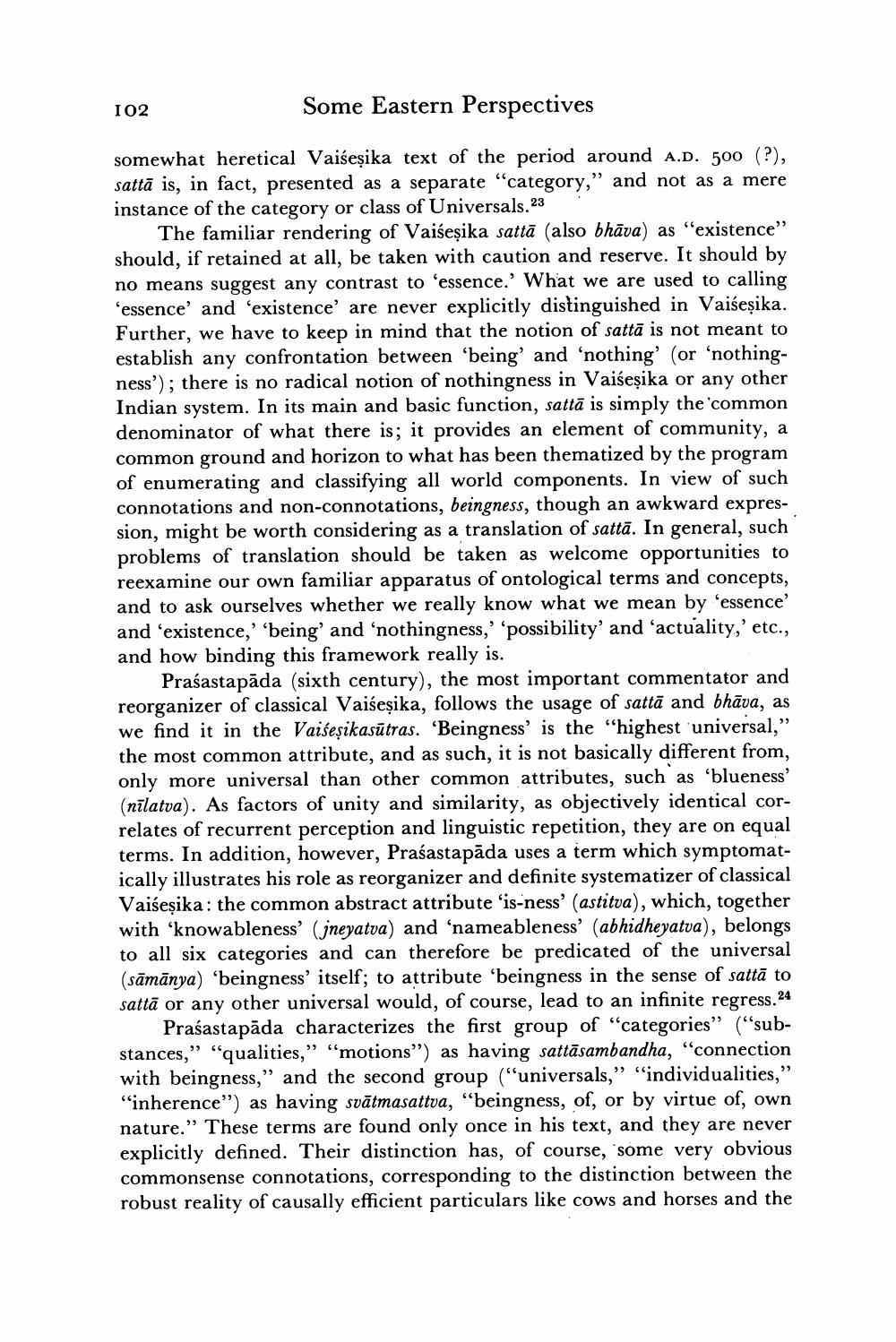________________
102
Some Eastern Perspectives
somewhat heretical Vaiseșika text of the period around A.D. 500 (?), sattā is, in fact, presented as a separate "category,” and not as a mere instance of the category or class of Universals.23
The familiar rendering of Vaiseșika sattā (also bhāva) as "existence" should, if retained at all, be taken with caution and reserve. It should by no means suggest any contrast to 'essence.' What we are used to calling 'essence' and 'existence' are never explicitly distinguished in Vaišeşika. Further, we have to keep in mind that the notion of sattā is not meant to establish any confrontation between 'being' and 'nothing' or 'nothingness'); there is no radical notion of nothingness in Vaiseșika or any other Indian system. In its main and basic function, sattā is simply the 'common denominator of what there is; it provides an element of community, a common ground and horizon to what has been thematized by the program of enumerating and classifying all world components. In view of such connotations and non-connotations, beingness, though an awkward expression, might be worth considering as a translation of sattā. In general, such problems of translation should be taken as welcome opportunities to reexamine our own familiar apparatus of ontological terms and concepts, and to ask ourselves whether we really know what we mean by 'essence' and 'existence,' 'being' and 'nothingness,' possibility' and 'actuality,' etc., and how binding this framework really is.
Prasastapāda (sixth century), the most important commentator and reorganizer of classical Vaiseșika, follows the usage of sattā and bhāva, as we find it in the Vaiseșikasūtras. 'Beingness' is the “highest universal," the most common attribute, and as such, it is not basically different from, only more universal than other common attributes, such as 'blueness' (nīlatva). As factors of unity and similarity, as objectively identical correlates of recurrent perception and linguistic repetition, they are on equal terms. In addition, however, Prasastapāda uses a term which symptomatically illustrates his role as reorganizer and definite systematizer of classical Vaiseșika: the common abstract attribute ‘is-ness' (astitva), which, together with 'knowableness' (jneyatva) and 'nameableness' (abhidheyatva), belongs to all six categories and can therefore be predicated of the universal (sāmānya) 'beingness' itself; to attribute 'beingness in the sense of sattā to sattā or any other universal would, of course, lead to an infinite regress.24
Prasastapāda characterizes the first group of "categories" ("substances,” "qualities," "motions”) as having sattāsambandha, "connection with beingness," and the second group ("universals," "individualities,” "inherence") as having svātmasattva, "beingness, of, or by virtue of, own nature.” These terms are found only once in his text, and they are never explicitly defined. Their distinction has, of course, some very obvious commonsense connotations, corresponding to the distinction between the robust reality of causally efficient particulars like cows and horses and the




